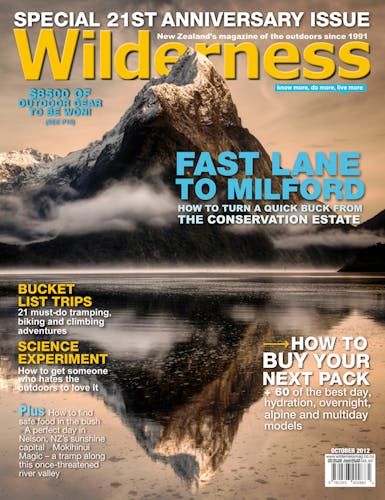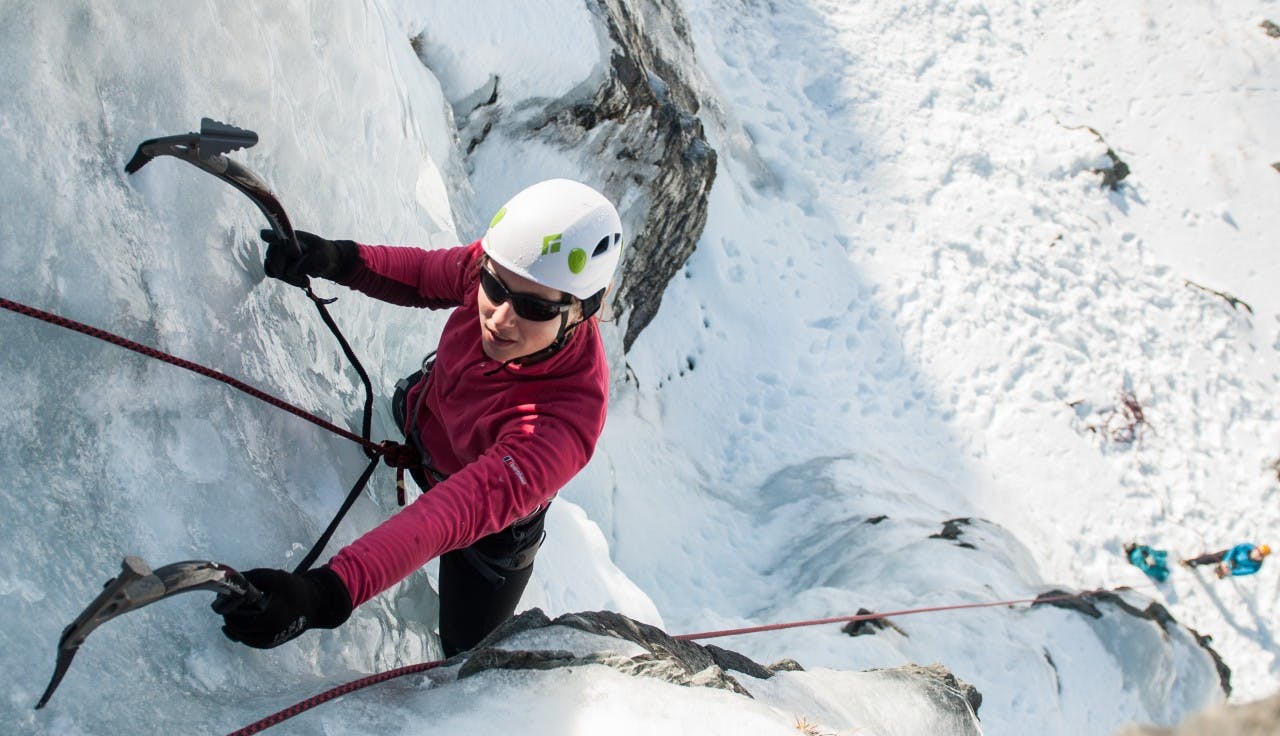Chicks with picks
Marta Scott top-roping at Wye Creek during the Remarkables Ice and Mixed Climbing Festival. The festival saw 115 climbers gather in Queenstown competing for awards and taking part in climbing courses. Marta was one of eight climbers attending the two day Adventure Consultants’ women only Chicks ‘n’ Picks ice climbing clinic.
– Fraser Crichton
Birds bounce back after 1080 drop
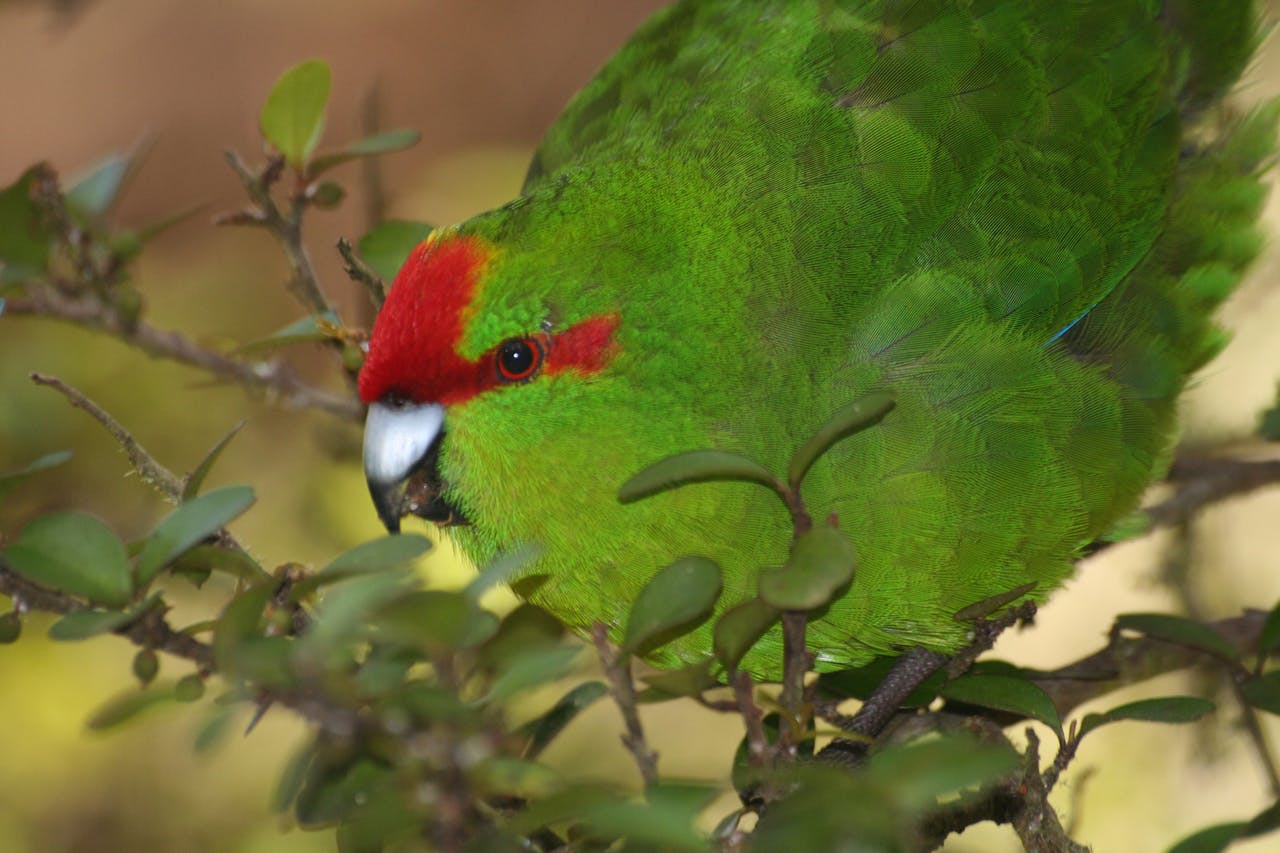
Birds like kakariki are making a tentative comeback two years after a 1080 poison drop in Tararua forest Park
According to DOC an aerial 1080 drop over the Tararuas in late 2010 is showing results, but Tararua Tramping Club president Peggy Munn said it’s still too early to tell.
Last week, DOC said pest numbers are down and native birds are beginning to bounce back in Tararua Forest Park following the 1080 pest control operation in late 2010.
The operation was part of Project Kaka, a 10 year DOC programme aimed at restoring the health of a 22,000ha belt stretching from Otaki Forks to Holdsworth in the Wairarapa.
DOC, the Animal Health Board, Landcare Research and Greater Wellington Regional Council have undertaken “intensive monitoring” before and after the operation with data showing significant drops in pest numbers and increasing populations of some native bird species.
Tararua Tramping Club president Peggy Munn said Project Kaka is based on good science, but it’s too early to tell how effective it will be in increasing bird populations.
On her trips into the park, Munn hasn’t noticed an increase in bird life, but said that could be due to weather conditions or the time of the year which influence bird behaviour.
“When you’re counting birds on some days you don’t even hear any even though you know they’re there somewhere,” Munn said. “I think we need to sit tight and wait for more data to come through.”
DOC’s Dr James Griffiths acknowledged it is still early days, but said signs for some bird species were promising
He said counts have shown rifleman, whitehead and kakariki have all increased following the operation, compared to the non-treatment area where no 1080 was applied.
These species are all able to breed quickly but are also very vulnerable to predation,
“In this respect they are like canaries in the coalmine and can give us an early indication if pest control is working,” said Griffiths. “If we can keep predator numbers down it gives native bird populations an opportunity to breed successfully”.
Rat, possum and stoat numbers will be controlled every three years in the Project Kaka zone through the aerial application of 1080, with the next operation scheduled for spring 2013.
Eruption to cost DOC upwards of $500,000
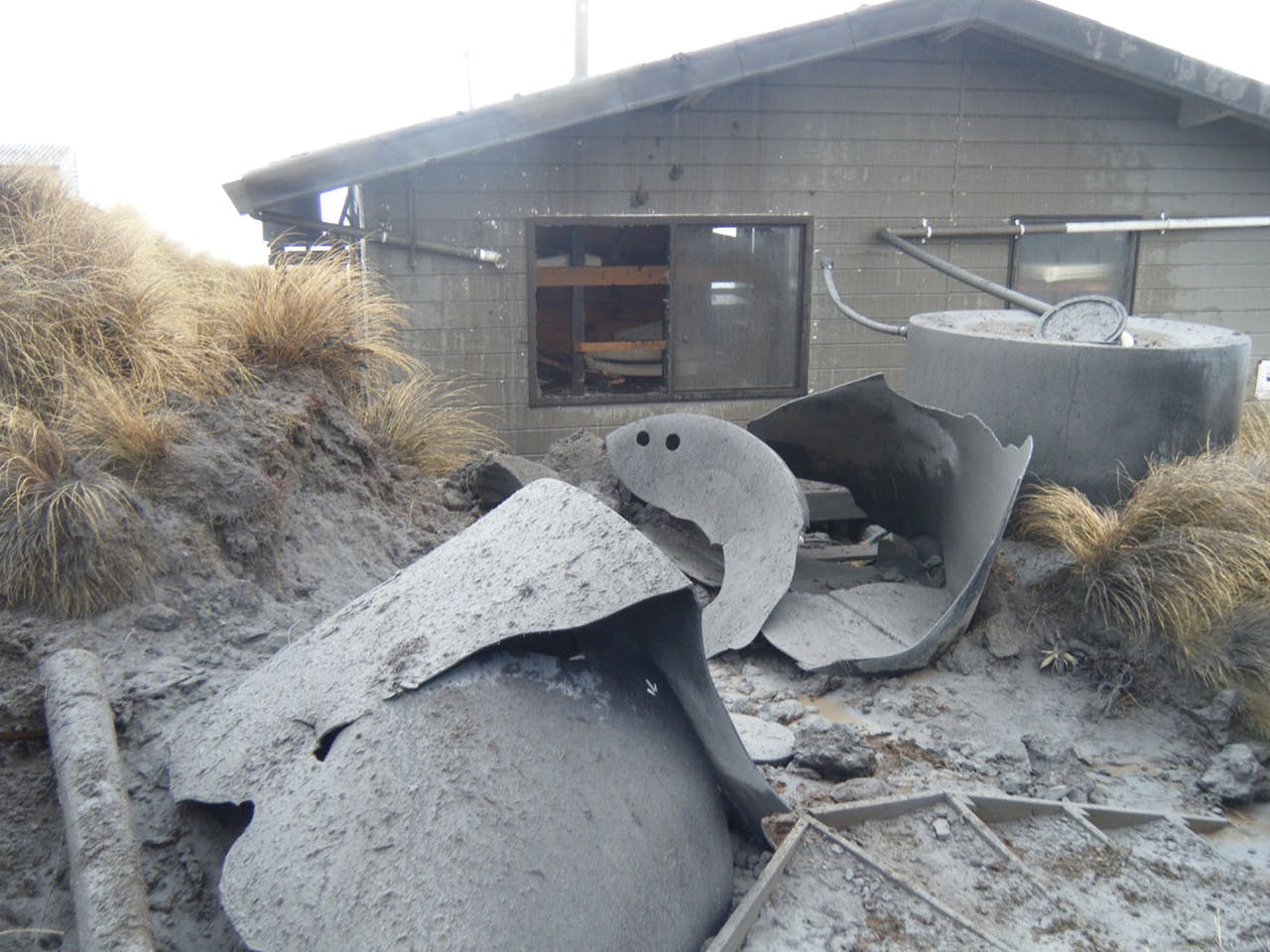
The damage to ketetahi Hut and the TAC track is extensive – and costly
The cash-strapped Department of Conservation is facing a bill of more than $500,000 to repair Ketetahi Hut and tracks damaged by the eruption of Mt Tongariro.
Ketetahi Hut was badly damaged in the eruption on August 1. DOC media spokesperson Robyn Orchard said if anyone had been staying at the hut at the time of the eruption it would have been “pretty horrendous”.
DOC’s Ruapehu area staff are meeting with iwi, community and business partners on August 24 to discuss a staged reopening of the sections of track in Tongariro National Park that remain closed.
DOC’s media advisor Robyn Orchard said local staff still had not been able to inspect the Tongariro Alpine Crossing track or Ketetahi Hut, so could not speculate on when the hut would be reopened or how long it would take to fix the track. She did say that damage to tracks and the hut was extensive.
“We’re talking $500,000-plus. [There’s] quite a bit of damage to the track. There are some areas of track where staircases have been basically severely damaged and some areas where there are massive holes in the track.”
The Tongariro Alpine Crossing track is built to a high standard. Boardwalks on the track cost $250,000 per kilometre to construct.
DOC plans to have the TAC track fully opened by the summer trekking season, which officially starts on Labour Weekend (October 20).
Council tames the Hillary Trail
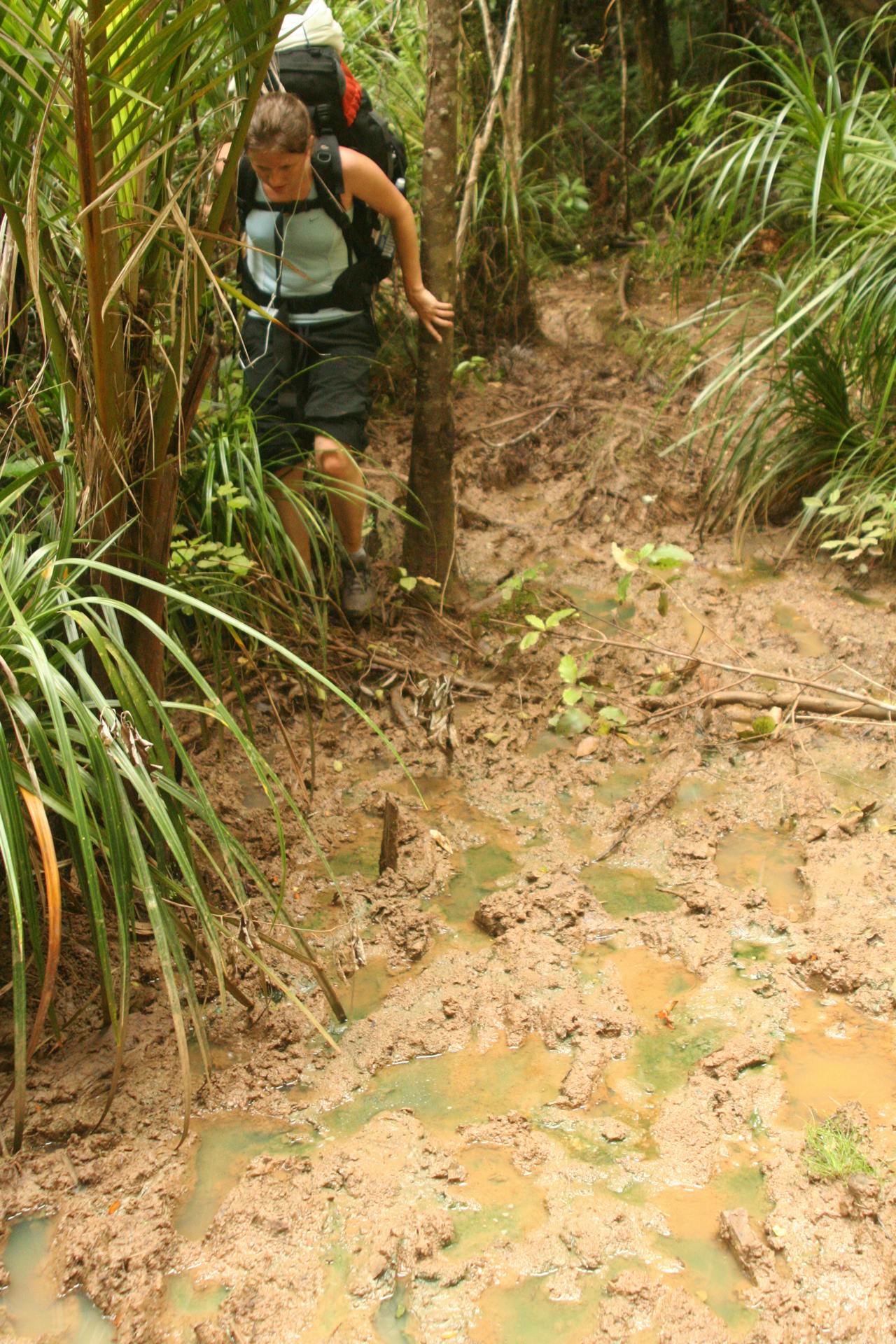
Upgrades top Hamilton track will make it more family friendly
Auckland Council is getting ready to tame the worst section of the Hillary Trail so it becomes an easy day in the park for families.
Since Wilderness reported on the Hillary Trail in March this year, Auckland Council has upgraded a number of sections of the trail and is planning more improvements between October and the end of summer.
One of the worst sections is Hamilton Track which falls well below the standard of a tramping trail.
The 2.8km track is part of the first day of the four to five day Hillary Trail and consists of many calf-deep mud bogs.
Ranger Stu Leighton told Wilderness the council is in the process of planning how to improve Hamilton Track and will use a combination of re-benching, metal and boardwalks to bring it up to standard.
Leighton said Pipeline Track will also receive improvements
“The whole first day of the trail will be the most achievable and will be a great introductory day for families,” Leighton said. “There are some people who will say we’ve gone too far, others will say we haven’t gone far enough.
“We’re just trying to keep it consistent by bringing it up to the standard of a tramping trail.”
Earlier this year, the council also upgraded Karamatura Track, installing 96.6m of boardwalk over bogs. The council also cut back overgrowth around Gibbons Track to allow more light and wind in to keep it drier. Muir Track received similar treatment and gorse was removed from around Omanawanui Track, new safety ropes installed and the lower section rerouted.
The council is also talking with DOC about upgrading Te Henga Coastal Walkway which is on conservation land.
Leighton said the council will upgrade the Pararaha Valley campsite this year and is actively looking for a campsite in the Bethells Beach area.
“We’re also going to be making a much stronger connection with the trail and accommodation providers,” Leighton said. “We’re looking at a website similar to the Otago Rail Trail that makes it easier for people to figure out how to use the trail.”
One conservator to rule them all?
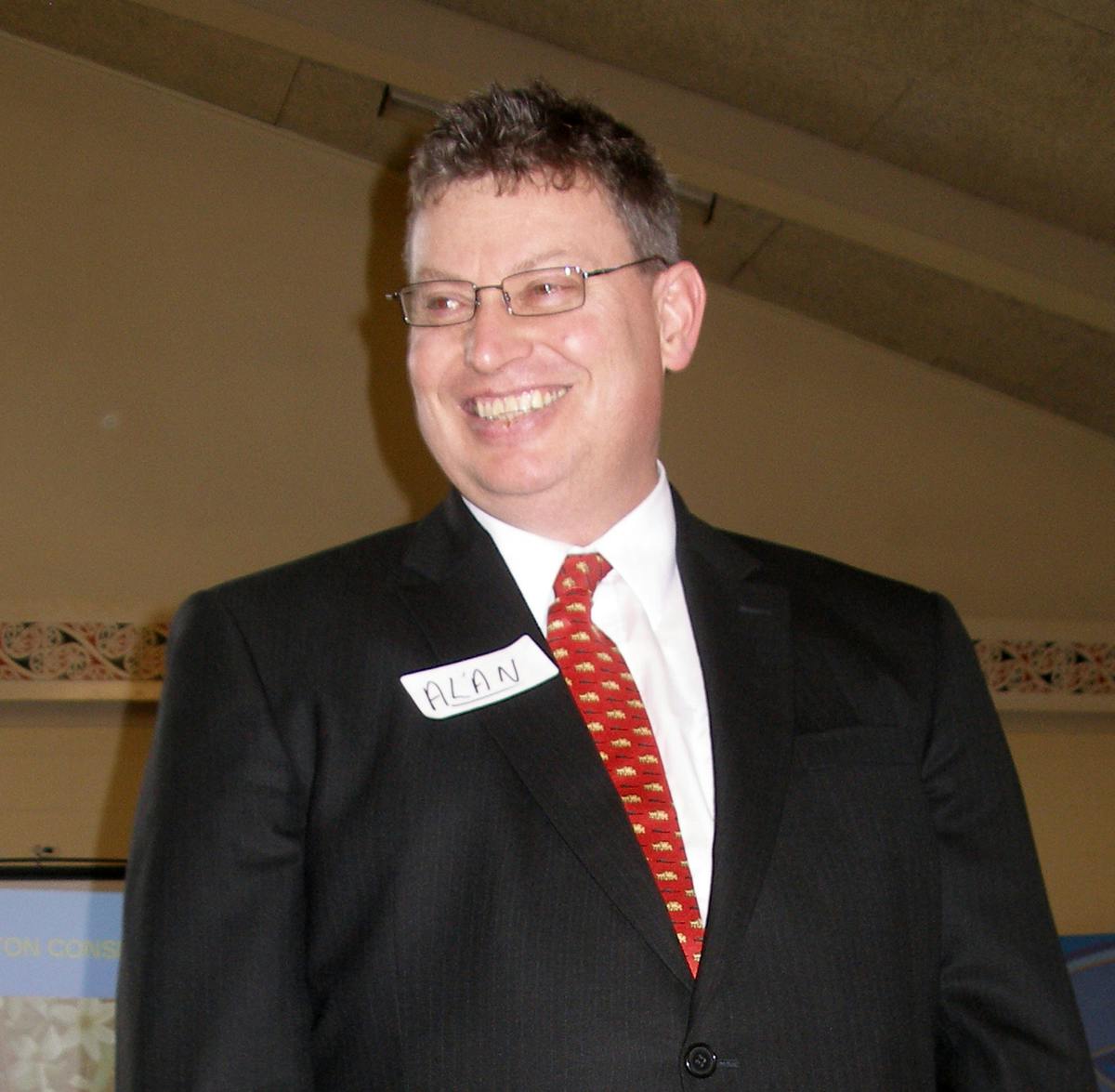
Alan McKenzie
Conservator for DOC’s Wellington/Hawke’s Bay conservancy Alan McKenzie is a very busy man.
DOC has recently appointed him as conservator of both Southland and Otago – a vast area totalling 3,302,417ha and including three national parks.
It’s such a huge area – by comparison the Auckland Conservator manages 36,000ha – that Southland Conservation Board Chair Viv Shaw questioned DOC’s motivation for the appointment.
“I think ultimately a lot of this is about saving money,” Shaw said.
Forest and Bird’s Nicola Toki agreed and said it is an example of DOC’s senior management being spread too thinly. Toki said there are many major issues underway in Southland and Otago, such as the Milford Dart tunnel application and Snowdon monorail proposal, and believes it’s too much for one man.
However, DOC’s Rory Newsam said the decision to appoint McKenzie as acting head of both Southland and Otago conservancies was based on practicality. The conservator of Otago recently resigned and the conservator of Southland was seconded to Wellington to direct one of the department’s projects.
Newsam said if the department had promoted two new conservators from each conservancy it would have disrupted each area’s senior management team.
DOC is currently going through its delivery review, a process to identify ways to cut costs due to finish in June 2013, and until then Newsam said it is more practical to have one conservator for both conservancies.
“This way you keep the teams as they are and only have a different conservator,” Newsam said. “We’re perfectly confident in Alan’s ability.”
Viv Shaw, however, believes this is a signal DOC intends to merge the two conservancies.
“The department is going through a period of rationalisation and I think we could all see this coming,” she said. “I guess the resignation of the Otago conservator has given the department the opportunity to do it.”
When questioned about this, Newsam said due to the delivery review “all options are on the table”.
“We’re looking at all the options, but haven’t made any long term decisions.”
However, Newsam said DOC restructured its conservancies in June this year, cutting 96 jobs. “So why would we be looking at changing our conservancies again,” he added.
Otago Conservation Board Chair Professor Abby Smith said due to the delivery review and the previous Otago conservator’s resignation, making McKenzie conservator of both regions is a “reasonable solution”.
“Something had to be done and quickly,” Smith said. “But I would not like this situation to go on in the long term.”
Ben Rediex will be acting as the Wellington/Hawke’s Bay conservator while McKenzie is working in the South Island.
Milford tunnel and monorail projects ‘attack democracy’
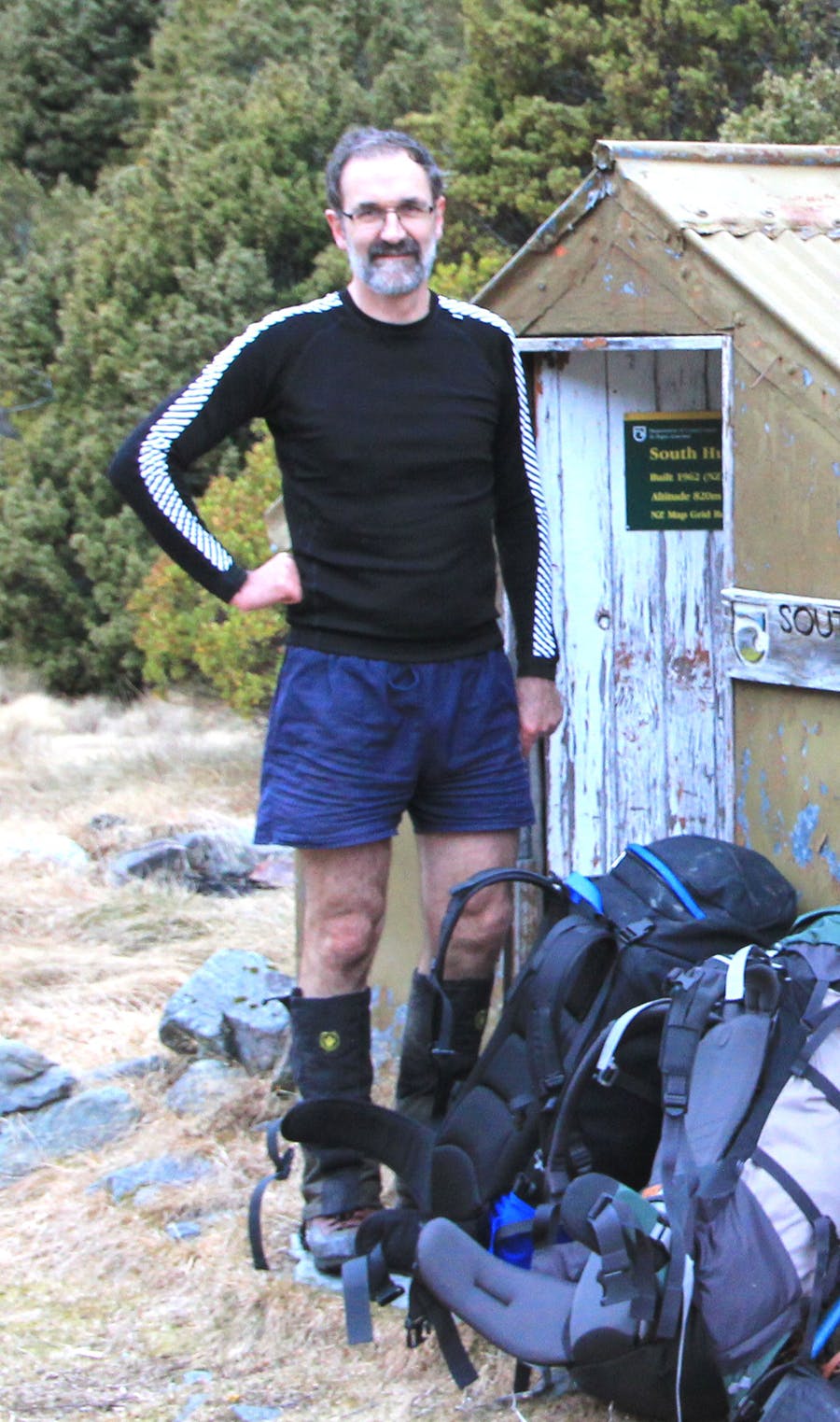
Robin McNeil says the Milford development proposals are an attack on democracy
Newly-appointed federated Mountacin clubs president Robin McNeil has attacked the Hollyford-Dart tunnel and Snowden Forest Monorail projects as an attack on the “core of democracy”.
McNeil, a Southland tramper and outdoors advocate has been appointed the president of the FMC, the national umbrella group for New Zealand tramping and mountaineering clubs representing more than 16,000 trampers and climbers, after past president Richard Davies stepped down from the role to take up a position with the Department of conservation.
McNeill, 54, is the editor of the authoritative Fiordland tramping guidebook Moir’s Guide South and the best-selling Safety in the Mountains.
A keen tramper for more than 35 years, McNeill said that during his nine year’s work with the Southland Conservation Board he has taken a special interest in developing the Fiordland and Rakiura National Park Plans. From participating in this work he is adamant that the proposed Hollyford-Dart tunnel and Snowden Forest monorail projects should not go ahead.
“They fly in the face of commonsense, they will deface the natural landscape, they mock statutory plans and the process to date attacks the core of democracy,” he said. “FMC will keep these important issues before the public. And the public are waking up to what is at stake, as the anti-mining marches last year showed.
“We have the most magnificent tramping and mountaineering opportunities to be found in the world and it’s still there to be enjoyed. I want to ensure our grandchildren will be able to enjoy the same beauty and the wild of our unique natural heritage as my generation of trampers.”
McNeil said one of his main objectives during his time as FMC president will be to advocate for families and those new to the outdoors, who he says are at risk of losing use of backcountry huts and tracks through the underfunding of DOC.
“The great outdoors is part of every New Zealander’s heritage and should not be disposed of through expediency,” he said. “What remains of our natural environment is also under dire attack from predators, but the public has yet to grasp the urgency or scale of what is at stake.”





